Choosing evergreens for the garden, most prefer pine needles. There is nothing surprising in this, because conifers retain their appearance for a long time, are easy to cut, so they are perfect for creating hedges or "living" sculptures. However, pine needles are not the only culture that can please the eye in winter, because there are many horticultural crops that can perfectly tolerate even severe frosts.
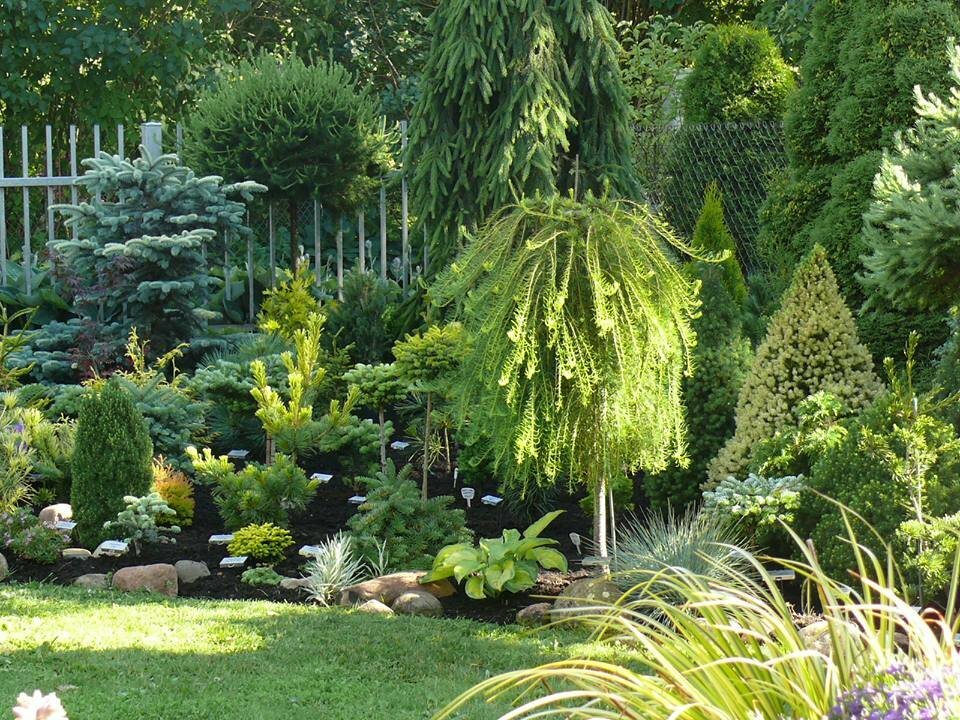
Evergreens decorate our gardens in any season, any time of the year
Evergreens in landscape design
Content
- Evergreens in landscape design
- Coniferous evergreen trees and shrubs - description with photo
- Pine
- Thuja western
- Yew
- Cedar
- Hemlock
- Juniper
- Cypress
- Deciduous trees and shrubs - description with photo
- Boxwood
- Guaiacum
- Laurel
- Oleander
- Badian
- Camellia
- Ivy
- Holly
- Olive
- Video: Evergreen hedge
- Photos of examples of the use of evergreens in landscape design
Evergreens in landscape design can be used to create hedges, borders, perfectly mask various outbuildings, and are also suitable for zoning the territory plot. Less often, an evergreen plant is chosen as a separate object, but if you choose the right place and competently compose the composition, then the culture will look harmoniously as a single decoration garden.
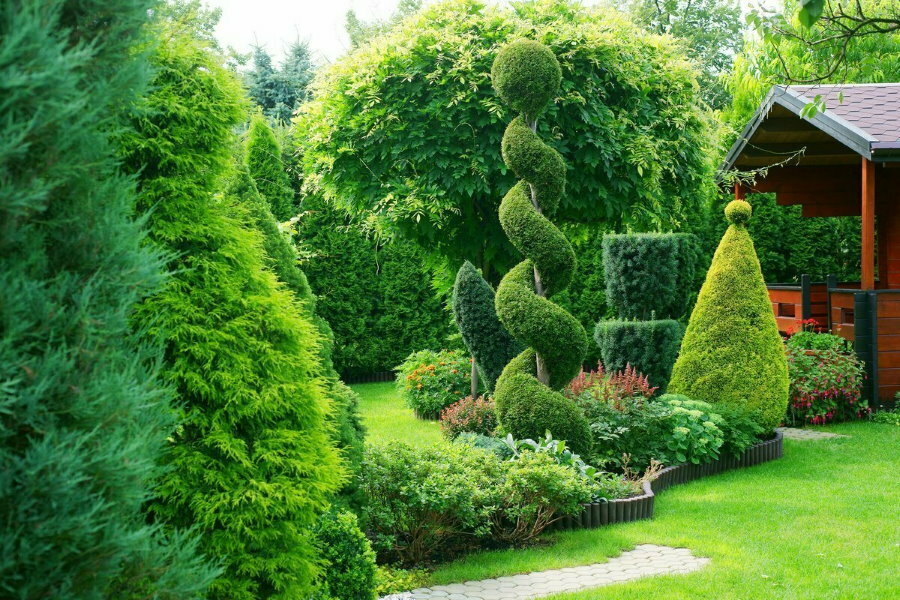
The most spectacular garden compositions are based on a harmonious combination of various forms of evergreens
Winter-hardy plants are planted not only in open areas, but also in flower beds and flower beds. Evergreens are combined with many annual or perennial crops. It is better to plant them on flower beds in such a way that they act as the main decoration of the created composition. This is important, because otherwise they will not be noticeable against the background of those plants that "fall asleep" for the winter.
Evergreens can improve the microclimate. Such crops relieve the site of monotony, go well with other horticultural crops.
Coniferous evergreen trees and shrubs - description with photo
The selection of evergreens is very rich. Among them are not only conifers, but also evergreen deciduous shrubs and trees. Different in size, growth rate and height, evergreen crops will be appropriate not only in large areas. Low-growing varieties are no less popular, especially when the size of the plot does not allow planting other types of crops. The list of evergreen conifers is great, let's consider the most common ones.
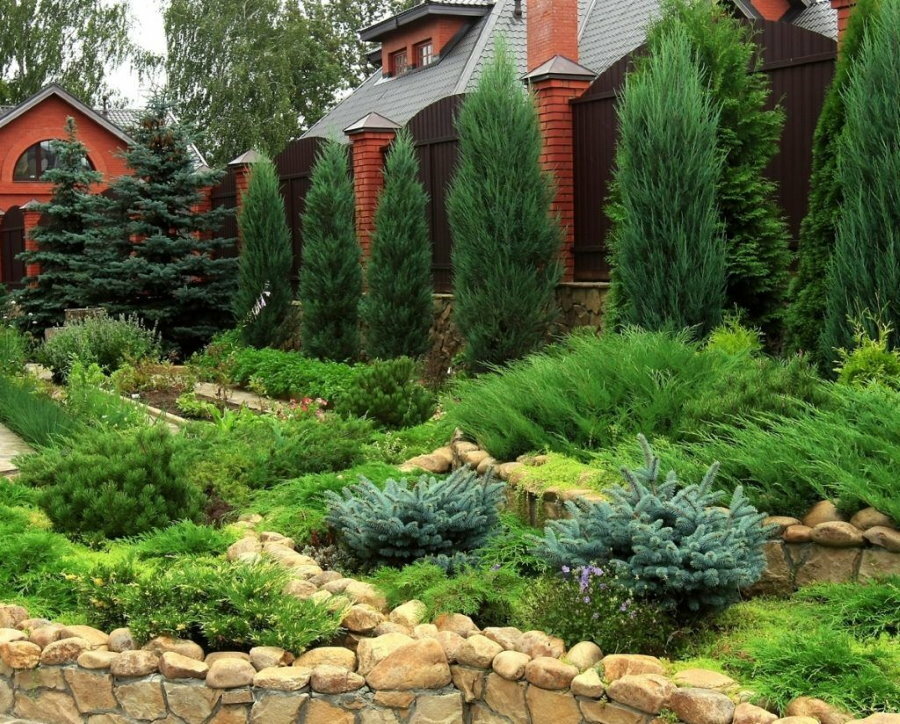
When choosing conifers, you should pay attention to the most unpretentious plants that do not require special care.
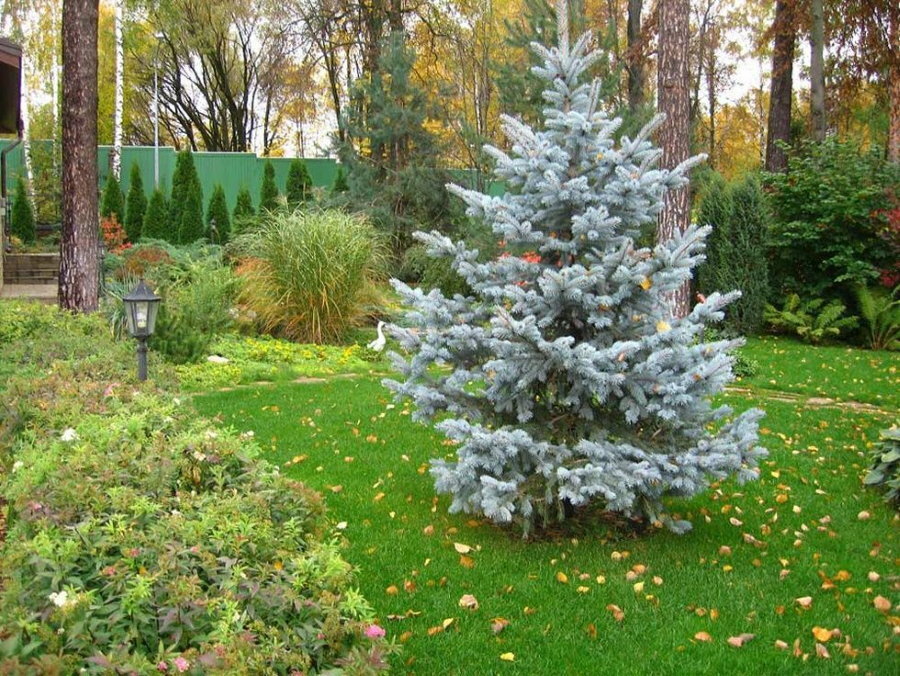
Spruce leads the popularity rating among conifers
Pine
Despite the dense crown, the pines begin to thin out over time. The trunk of the tree is quite long and the bark is dark brown. With pruning, as a rule, there are no problems, only the desired shape of the crown is given in the summer, until the movement of the juice has stopped. To obtain lateral shoots, pinching is carried out in the spring. It is not recommended to choose pine trees for composing a hedge, as they thin out, which can ruin the entire composition as a whole.
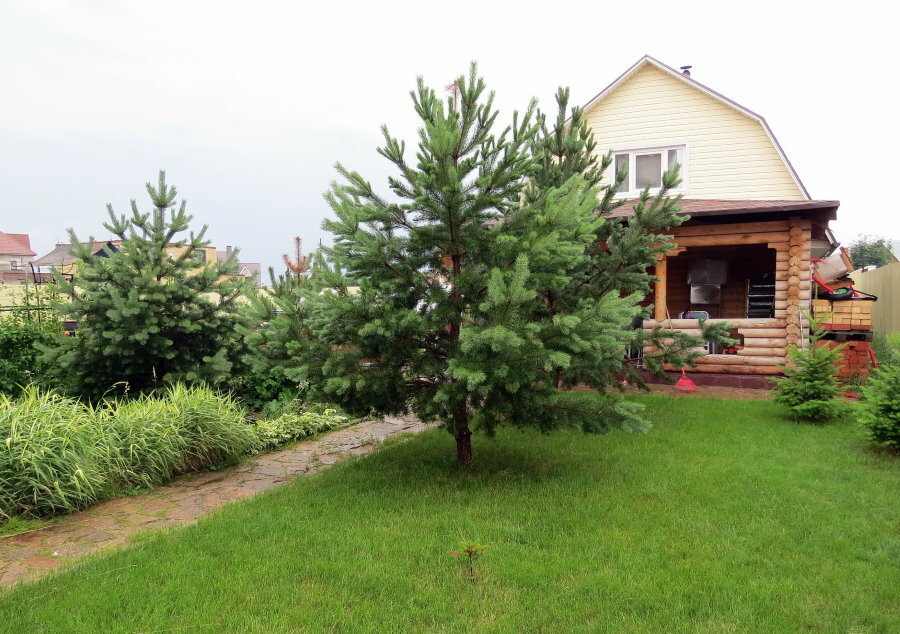
Pine trees are drought tolerant and thrive on poor sandy soils
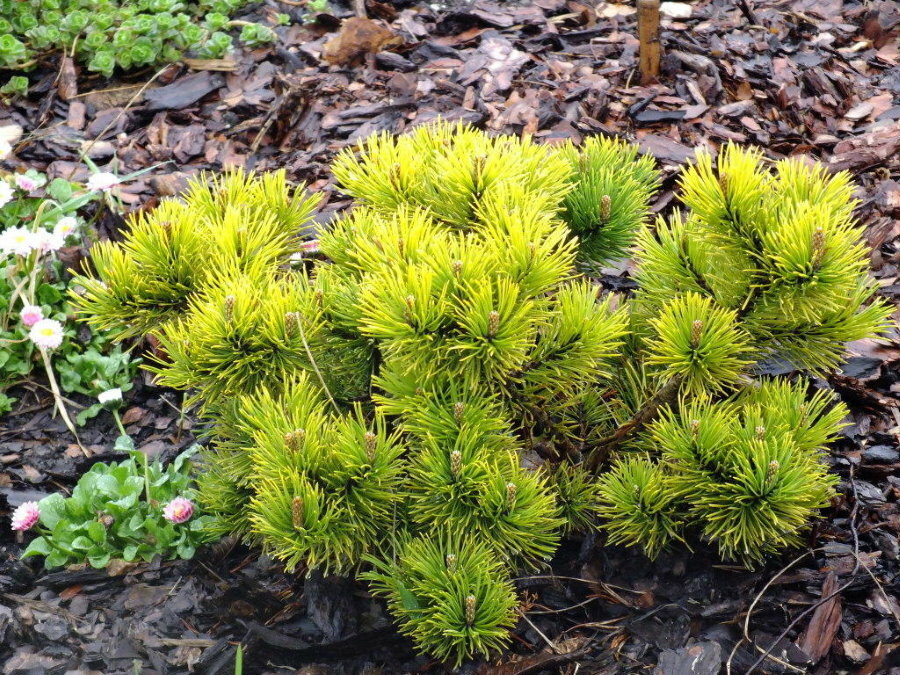
Mountain pine with a squat crown is often planted on alpine hills.
Thuja western
The plant feels great in the climate of central Russia. Thanks to a large selection of varieties and a variety of decorative forms, thuja can be found today in almost every landscape project.
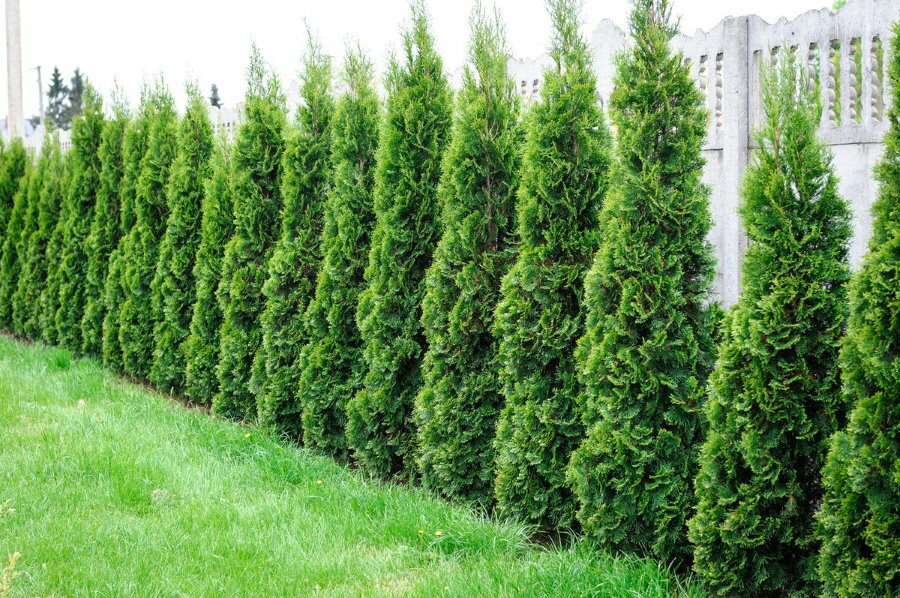
Thuja western perfectly copes with the role of an ornamental shrub and natural hedge
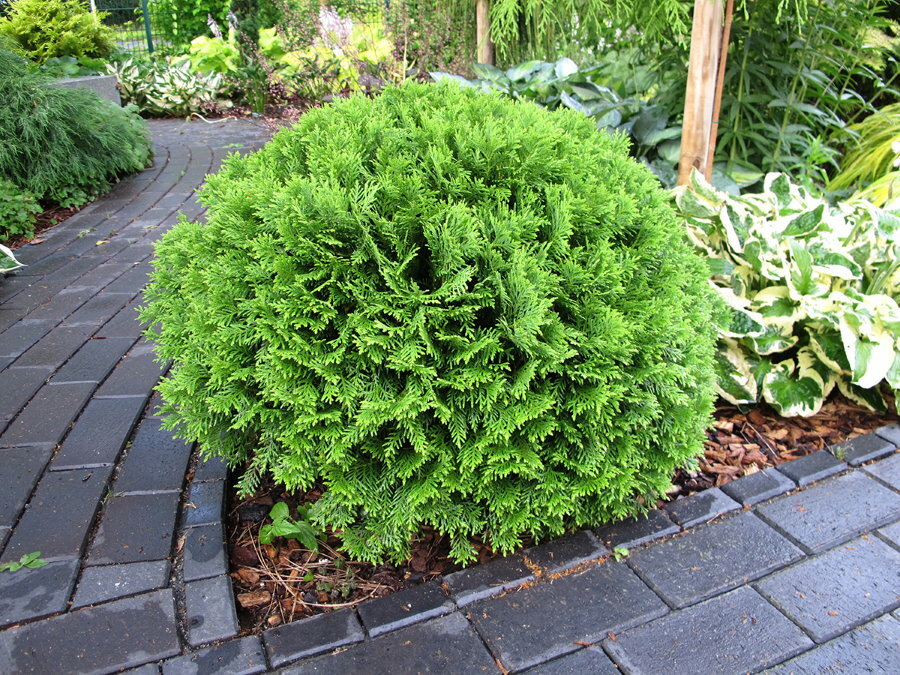
Along with tall thujas, there are undersized and spherical plants. The latter grows beautifully in the shade of tall trees
Thuja western is the best choice for creating a green hedge. It grows rapidly and after 3-4 years it allows you to get a full-fledged "live" fence.
Since thuja has a shallow root system, it can be transplanted at any time of the year. However, the ideal time for this will be spring. You need to know that thuja does not grow quickly in order to get an even crown, it needs uniform lighting.
Yew
This plant can rightfully be called a long-liver among evergreen crops. The tree has been growing for three millennia. It is characterized by deep green needles, as well as small red cones. Yew loves shade, so an area where there is not enough sun will be an ideal place for him.
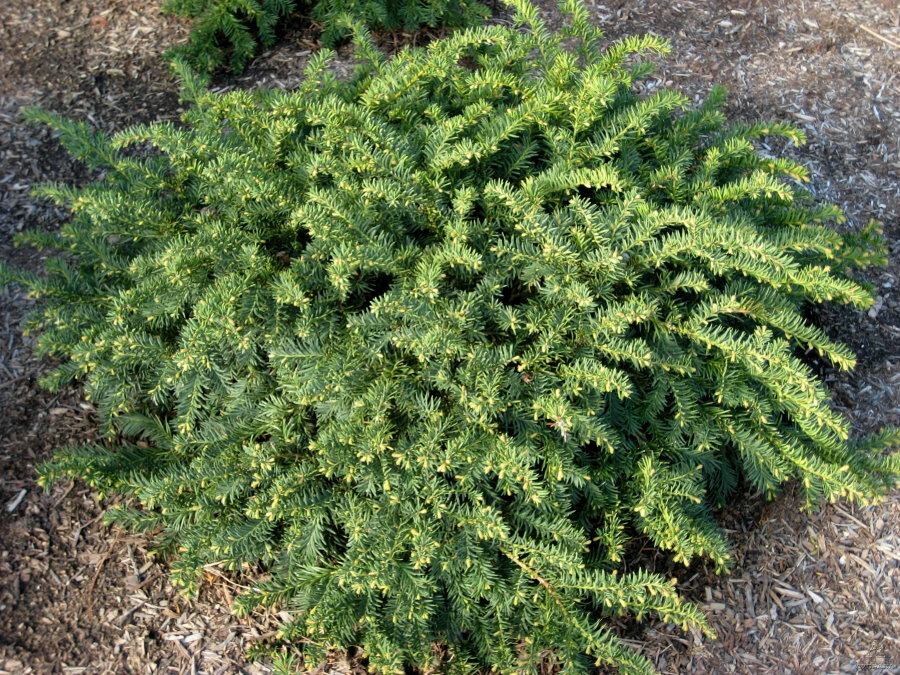
Yew is the leader among conifers for shade tolerance and unpretentiousness to the soil
The bark, needles and cones contain poisonous substances, it is strictly forbidden to eat them. After completing the work, wash your hands thoroughly.
Yew is easy to cut, which makes it possible to give it absolutely any shape.
Cedar
Like other conifers, cedar is decorative all year round. Of course, this is a real decoration of the site, because its bright green branches look especially beautiful against the background of white snow.

Distinguish between Siberian and European cedar. The first is more suitable for a mild climate, the second calmly withstands the most severe frosts
Cedar is considered an unpretentious plant, its stem is small, but powerful. The tree can reach a height of 40 m, and its diameter is about 2 m.
Despite its impressive size, this evergreen tree will look good not only in a large area. A freestanding cedar will also become a real decoration even for a compact site.
Hemlock
This is a small evergreen tree from the pine family. Despite the fact that the hemlock is a short tree, this evergreen plant attracts attention with its beautiful wide crown. In landscape design, a hemlock is often chosen if it is necessary to give zest to a rocky area.
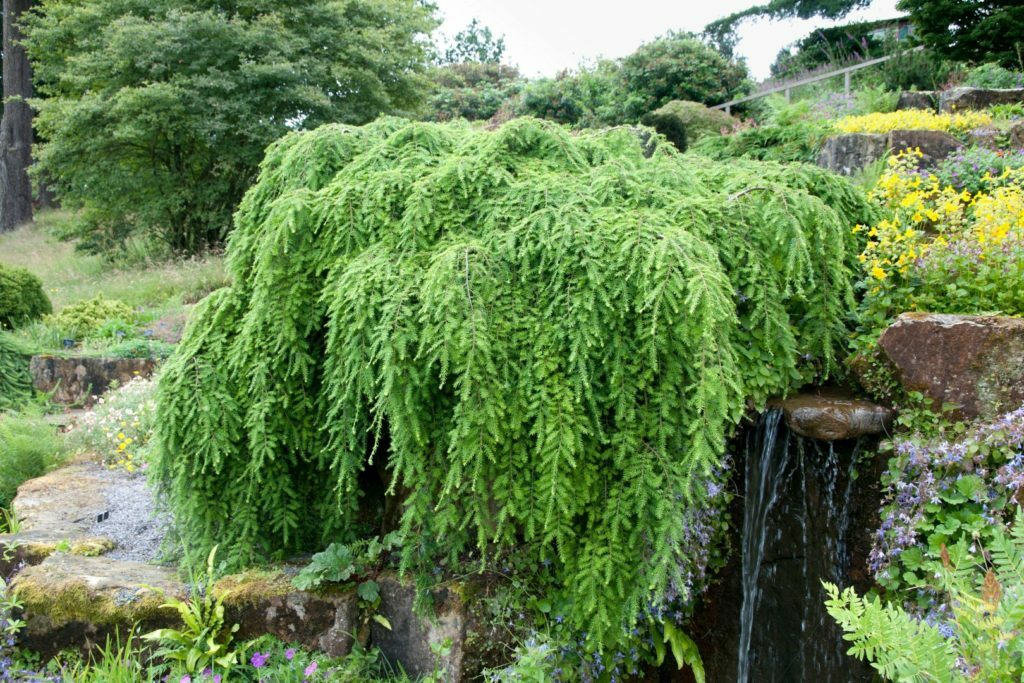
Hemlock canadensis has a weeping crown shape and prefers moist fertile soils
Even in a small area, this coniferous tree will look great. Hemlock can be planted both separately and together with other conifers.
Many people make the mistake of planting conifers too close to each other. Despite its large growth, the hemlock takes many nutrients from the ground. This is worth considering!
Juniper
There are conifers that have both an artisanal form and a tree-like one. This includes the juniper. Its height can reach 3 m, but the tree can grow up to 12 m. The bark of the seedlings is mainly reddish-brown, in an adult plant it is brown.
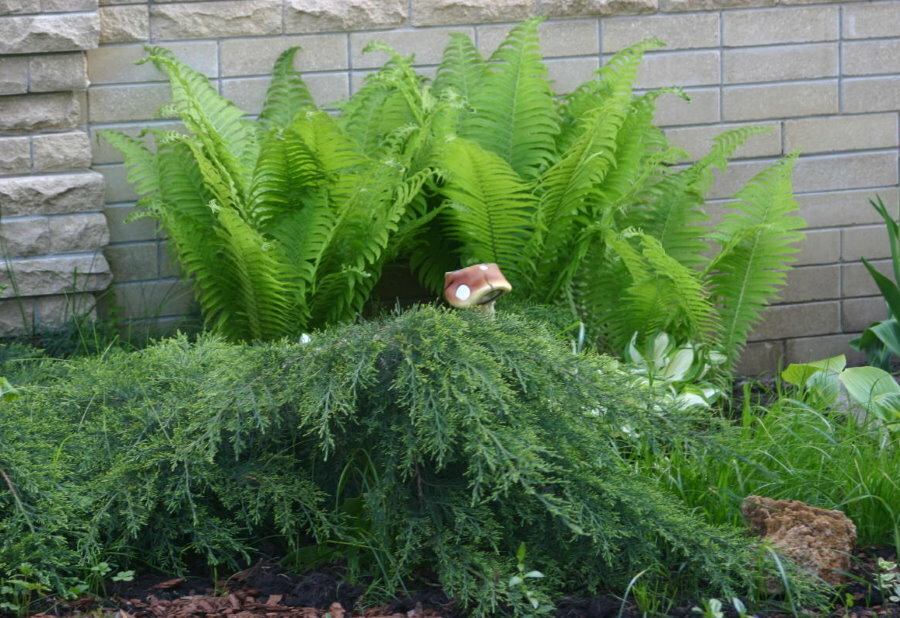
Junipers grow well both in the sun and in partial shade. The photo shows a spectacular composition of juniper and fern
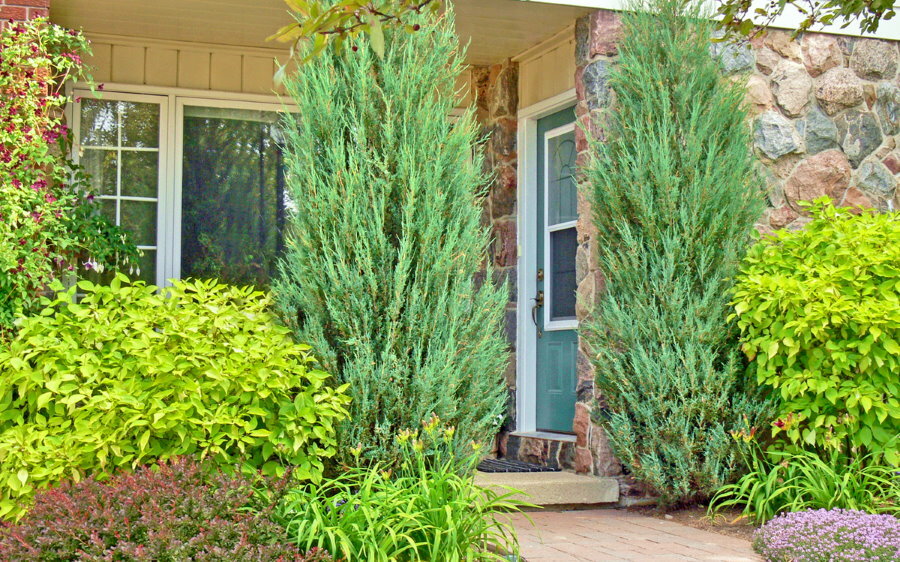
Rocky junipers look great as single compositions.
The needles of the juniper are arranged in pairs, between the conifers you can see large cones, similar to berries. Ephedra can be planted with other ornamental plants such as tapeworm. Juniper fits perfectly into a variety of landscaping styles. It is planted in flower beds, lawns are filled with it, and the ephedra also looks great as a hedge.
Cypress
When planting cypress on a plot, you should know that this ephedra does not like shade. Otherwise, the tree is unpretentious, can be planted on any soil, easily tolerate drought. Separately, it is worth highlighting the types of cypress, which have a pyramidal and curved crown. Very often, a cypress of a monumental form can be seen on the territory of sanatoriums and recreation centers.
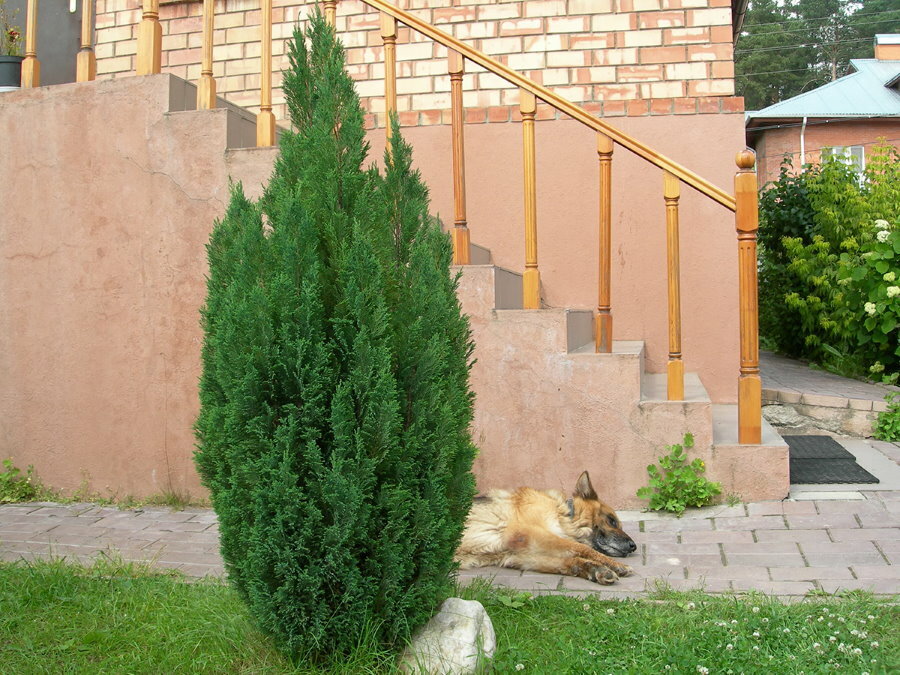
Cypress is a resident of the southern regions and does not tolerate severe frosts
Deciduous trees and shrubs - description with photo
Evergreen deciduous trees and shrubs native to tropical countries, most of them need warmth. Let's consider the most popular types.
Boxwood
This tree is small in size, rarely grows more than 10-12 m in height, the leaves are small, dense. In the axils of the leaves, small white flowers can be seen forming a spikelet. Boxwood is ideal for framing roads, and thanks to easy pruning, the tree can be shaped in a wide variety of shapes. However, it grows rather slowly.
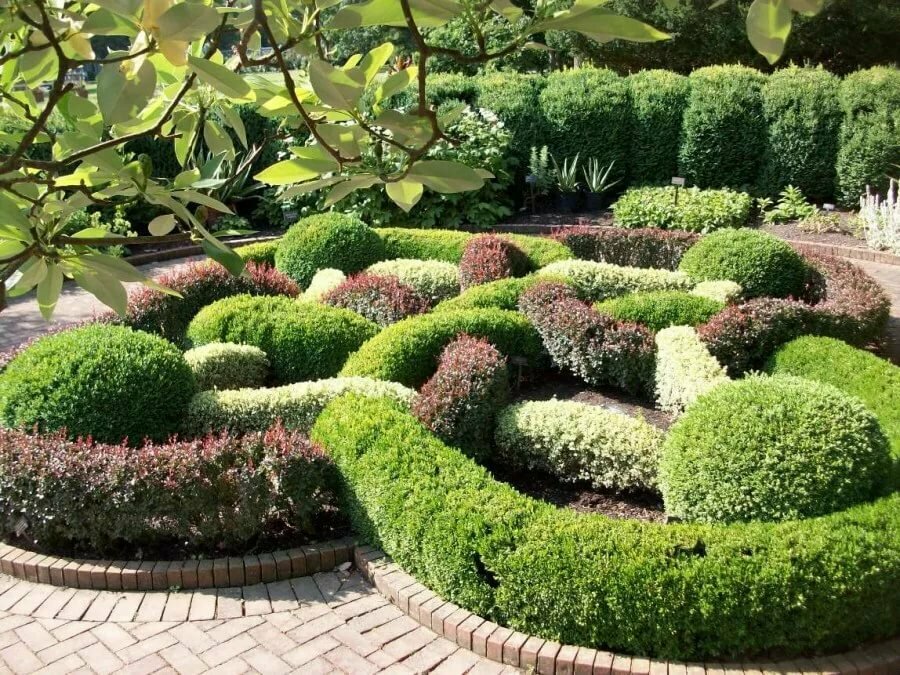
Boxwood is often recommended for beginners, because it is extremely difficult to ruin it by negligence. The plant is not afraid of both short-term drought and waterlogging of the soil
Guaiacum
It is a low plant (6-10 m) with a diameter of 0.7 m. The tree has many curved branches that form a dome shape. Leaves of a rich green hue, leathery dense. Guaiacum is unpretentious, tolerates drought well, and can be planted on any soil.
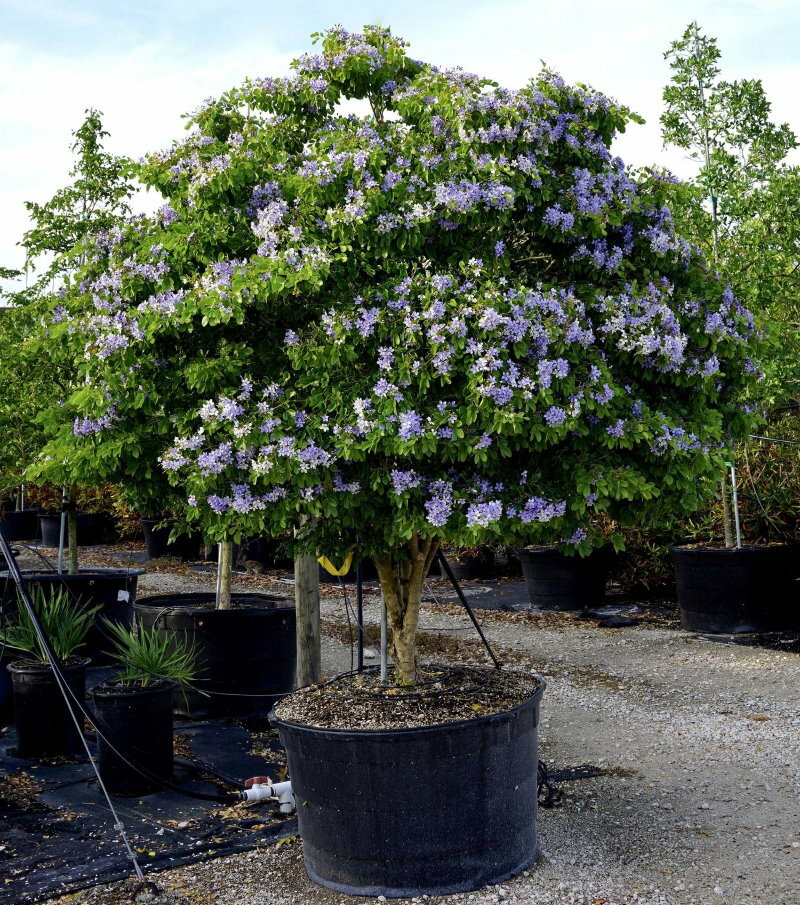
The guaiac tree is grown for decorative and medicinal purposes.
Laurel
A short tree with dense, shiny leaves with a pleasant aroma. All parts of laurel contain essential oils. The flowers are small, the fruits are similar to berries.

Laurels perfectly tolerate a haircut, are suitable for creating hedges and garden compositions of the most diverse forms
Oleander
A small shrub with a height of 3 to 5 m, develops quickly, blooms with lush flowers. The leaves are characterized by a dark green color. Inflorescences no more than 6 cm in diameter. This is a heat-loving plant, all year round in an open area can be found only in the south, where the air temperature does not drop below + 8 degrees.
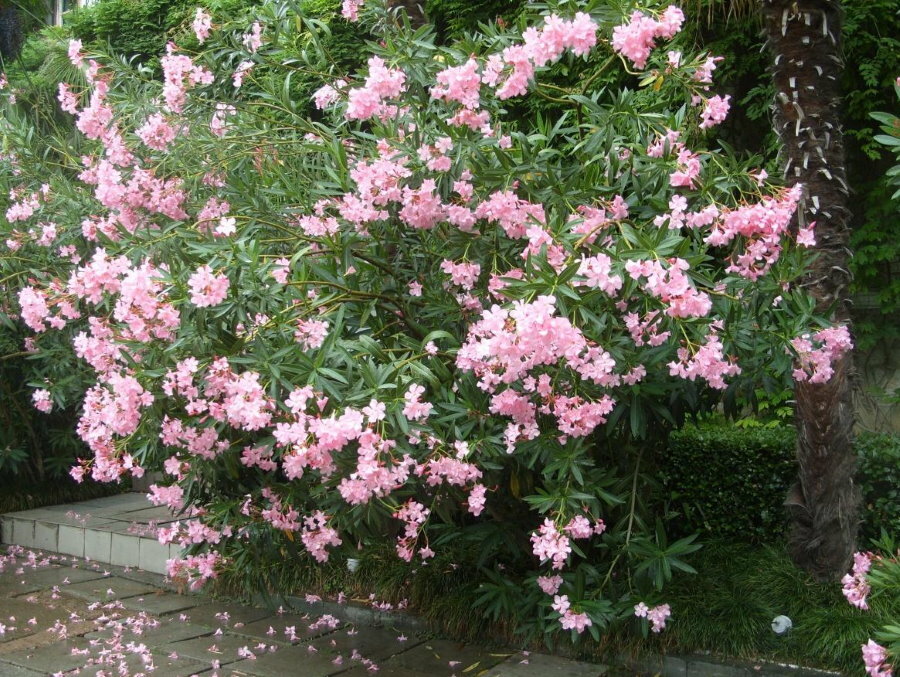
Oleander is used as a specimen, in group plantings, in the design of alleys, stairs and terraces
Badian
An evergreen shrub that can grow up to 15 m in height.The leaves are dense, their length reaches 15 cm. Flowers come in different shades: burgundy, red, yellow. Fruits in the form of stars. The plant is unpretentious, but prefers partial shade. To form a beautiful bush, it is regularly pruned.

Badian prefers partial shade, blooms from March to May
Camellia
This evergreen shrub will be a spectacular decoration for any site. The dark green foliage retains its appearance throughout the year. Camellia flowers, which are very similar to roses, come in different shades: red, white, pink. Due to its rapid development, the shrub will embellish the site in a short time.
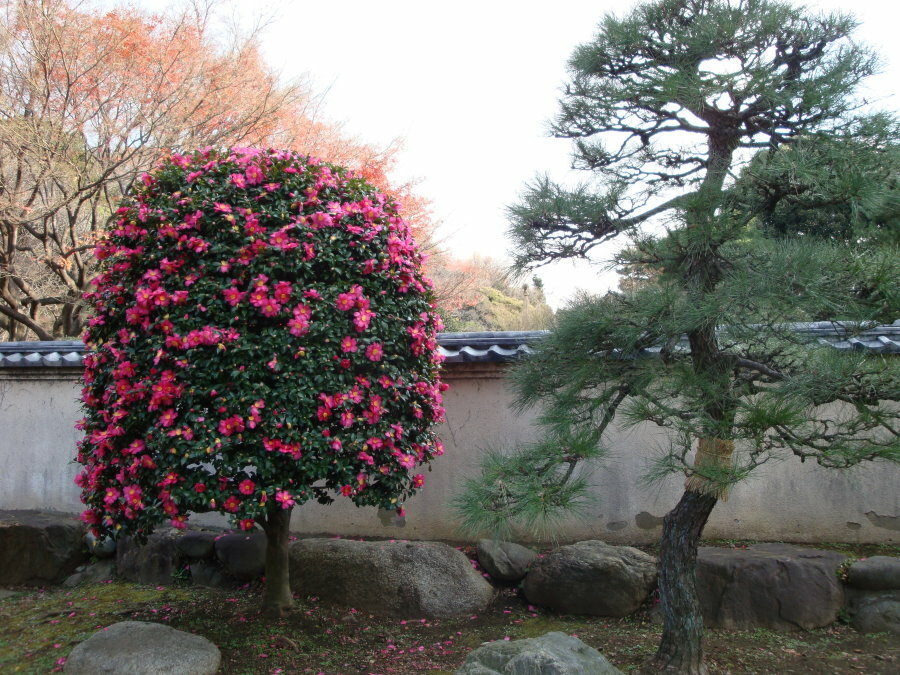
Blooming camellia can revive any corner of the garden
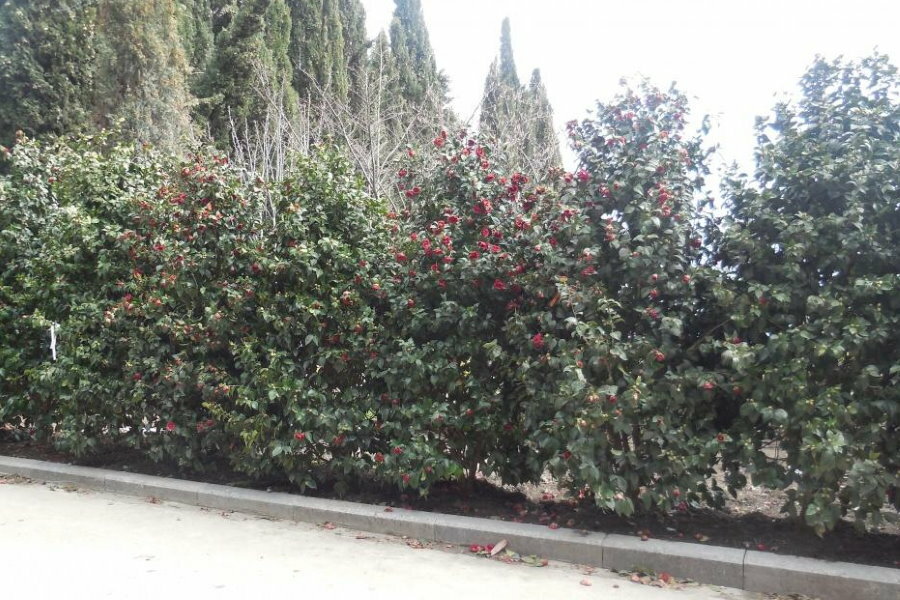
Japanese camellia is often used as a hedge
Ivy
With this climbing plant, you can create amazing compositions that will transform any area. The plant is tall, grows up to 30 m. Common ivy or the Hedera helix species is often used in landscape design. Another well-known species is Hedera colchica. Ivy has large leaves (up to 25 cm) green, yellow, and also brown. In autumn you can see umbrella-shaped inflorescences, in spring black berries appear.
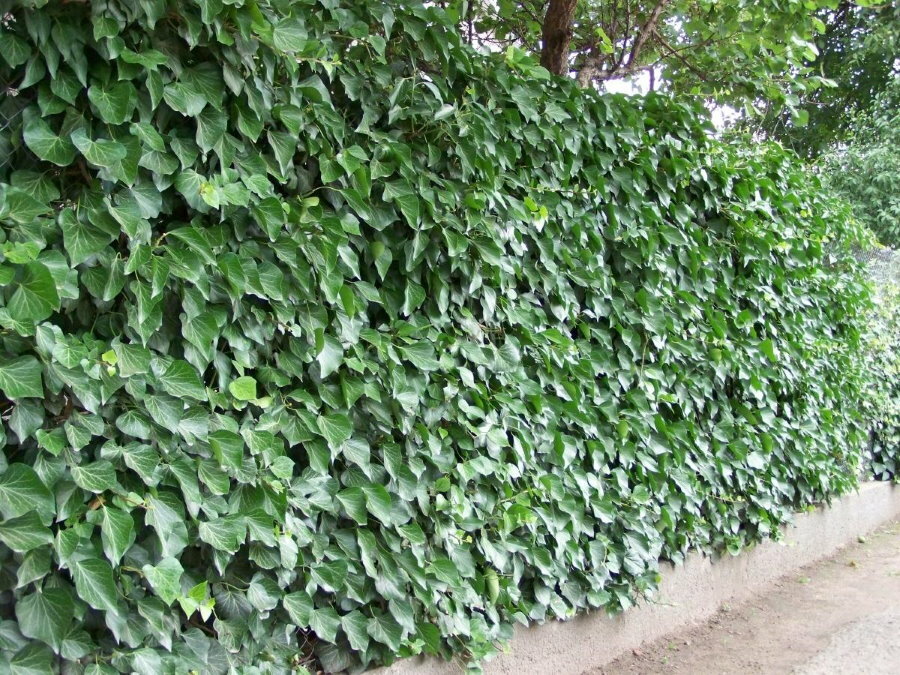
Many landscape designers choose ivy for vertical landscaping of a suburban area.
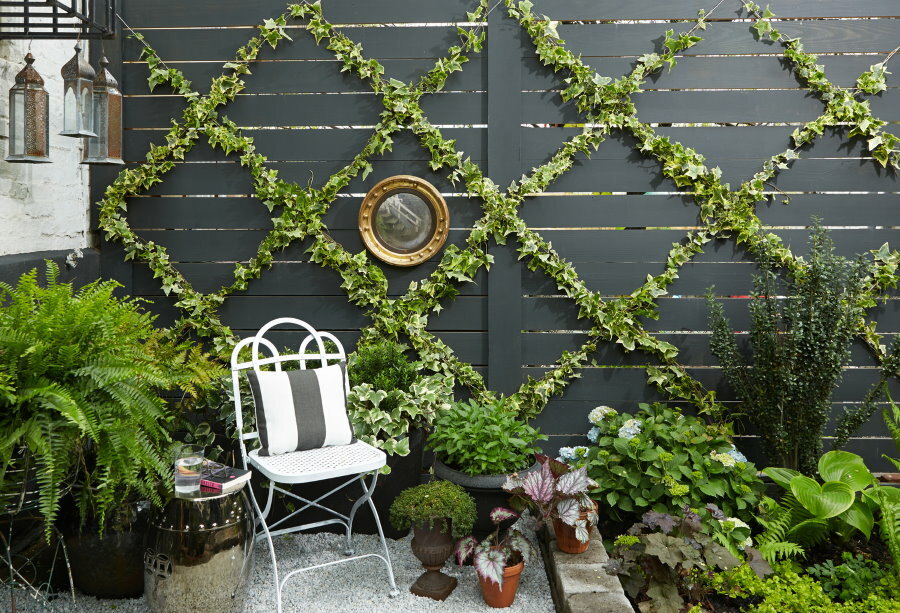
This evergreen vine is often decorated with fences, terraces and balconies.
Holly
Holly leaves are dense with denticles at the edges, saturated green. The plant also ripens berries, which come in different shades: black, white, yellow, red. Among the decorative forms, it is worth highlighting the common holly, which has a dome-shaped shape. The culture is not demanding, it makes beautiful hedges. They are planted both singly and in a group with other plants.
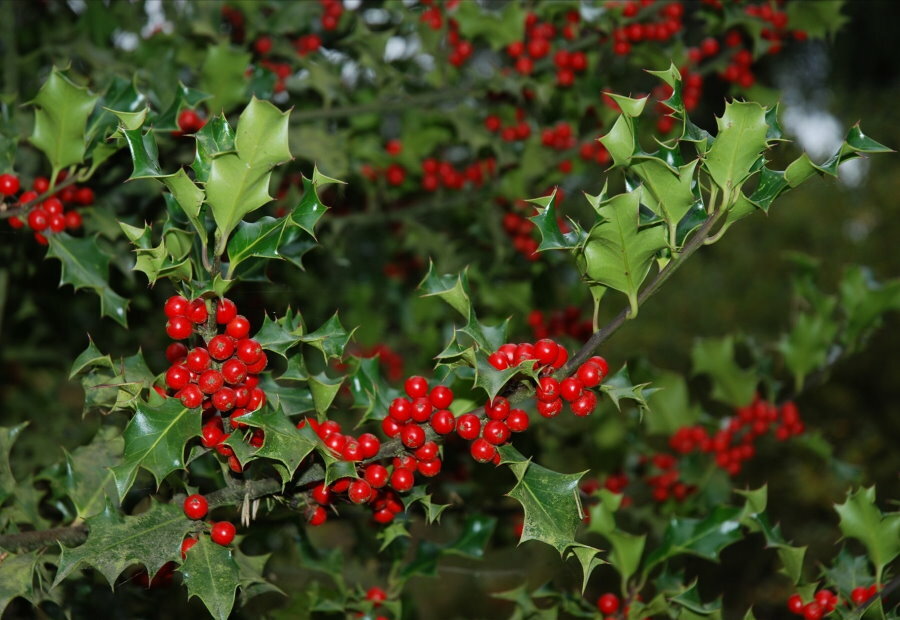
Bright holly berries remain on the branches until spring.
Olive
Deciduous shrub that resembles a small tree. It reaches a height of 2-4 m, branches of a grayish-brown hue, on the shoots there are thorns 5 cm long. The foliage is silvery and ovoid.
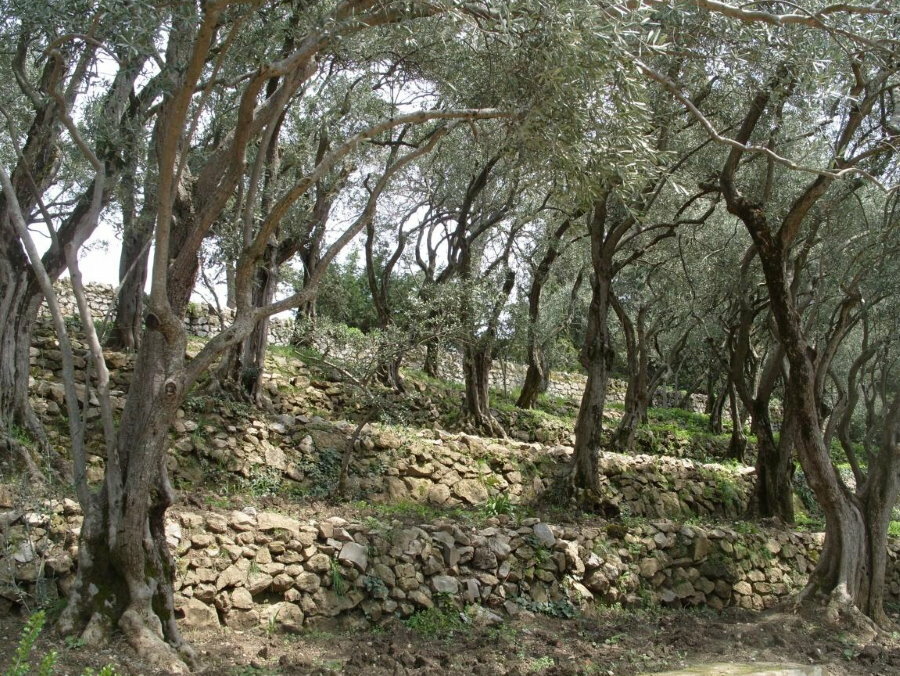
The European olive can grow in one place for hundreds of years
This is a rather spectacular plant, so it can often be seen on the site. It is used both for single plantings and in a group with other crops. Thanks to the unusual color of the leaves, the plant can act as a background, making other plants look good.
When planting evergreen trees and shrubs on the site, you should provide them with proper care. This is the only way the plants will decorate the site all year round.
